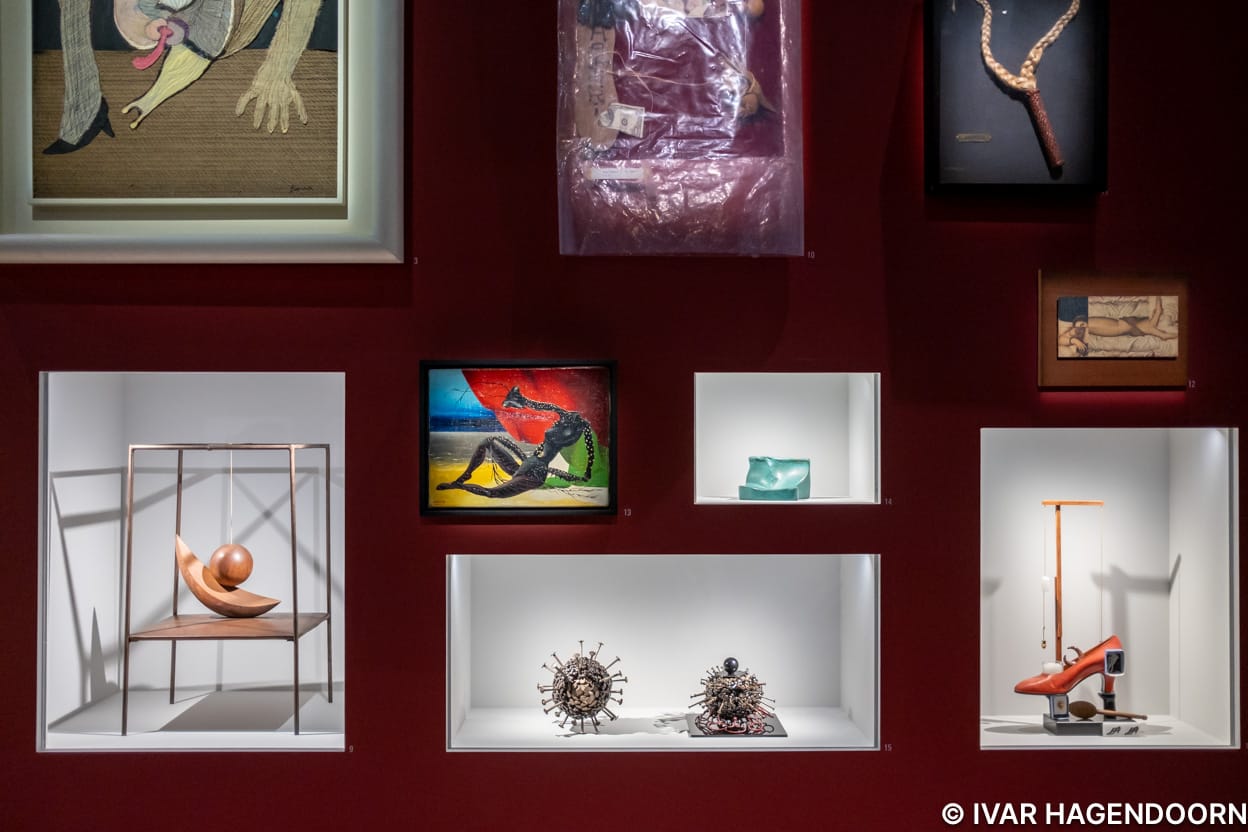
To celebrate the centenary of the birth of Surrealism the Centre Pompidou, in collaboration with several other museums, has organized a large survey, which shows Surrealism in all its breadth and geographical scope. Surrealism was one of the few art movements, which spread around the world, merging with local traditions in the process. It is also one of the few art movements that is still very much alive. The surrealist movement may have been officially disbanded in 1969, but Surrealism itself lives on in music videos and advertising and now in the output of text to image and video generators such as Dall-e, Midjourney and Sora.
The term surrealism was coined by the French poet Guillaume Apollinaire in 1917, but it didn’t catch on until the French poet and critic André Breton published his Surrealist Manifesto in October 1924. As a matter of fact, two weeks earlier another group of poets led by Yvan Goll published a rival surrealist manifesto, in which they claimed to be the true heirs of Apollinaire. But in the end it was Breton who emerged victorious.
In his Surrealist Manifesto André Breton defined surrealism as “Surrealism: n. Psychic automatism in its pure state, by which one proposes to express - verbally, by means of the written word, or in any other manner - the actual functioning of thought. Dictated by thought, in the absence of any control exercised by reason, exempt from any aesthetic or moral concern.”
Surrealism was originally a literary movement. The group led by André Breton consisted of several poets including Paul Éluard, Louis Aragon and Robert Desnos, who experimented with automatic writing. But it was in the visual arts that Surrealism would flourish.
The exhibition at the Centre Pompidou is organized both chronologically and thematically and has been laid out in the form of a labyrinth, with the original manuscript of André Breton’s Surrealist Manifesto, on loan from the Bibliothèque Nationale de France, at its centre. It is surrounded by 13 themed sections, such as the trajectory of the dream, chimera, the kingdom of the mothers, the philosopher’s stone, hymns to the night, the tears of eros and cosmos.
The exhibition includes all the usual suspects, Salvador Dalí, René Magritte, Max Ernst, Man Ray, Yves Tanguy and Joan Miró, but I was delighted to discover a host of (woman) artists, whose work I was unfamiliar with. Indeed, perhaps because of its call to freedom and liberation, there are a large number of women associated with Surrealism, of whom Meret Oppenheim, Dora Maar and Claude Cahun are the most famous. I loved the work of the British-born Mexican artist Leonora Carrington (1917-2011) and the Mexican artist Remedios Varo (1908-1963), whose paintings appear to be straight out of a nightmare.
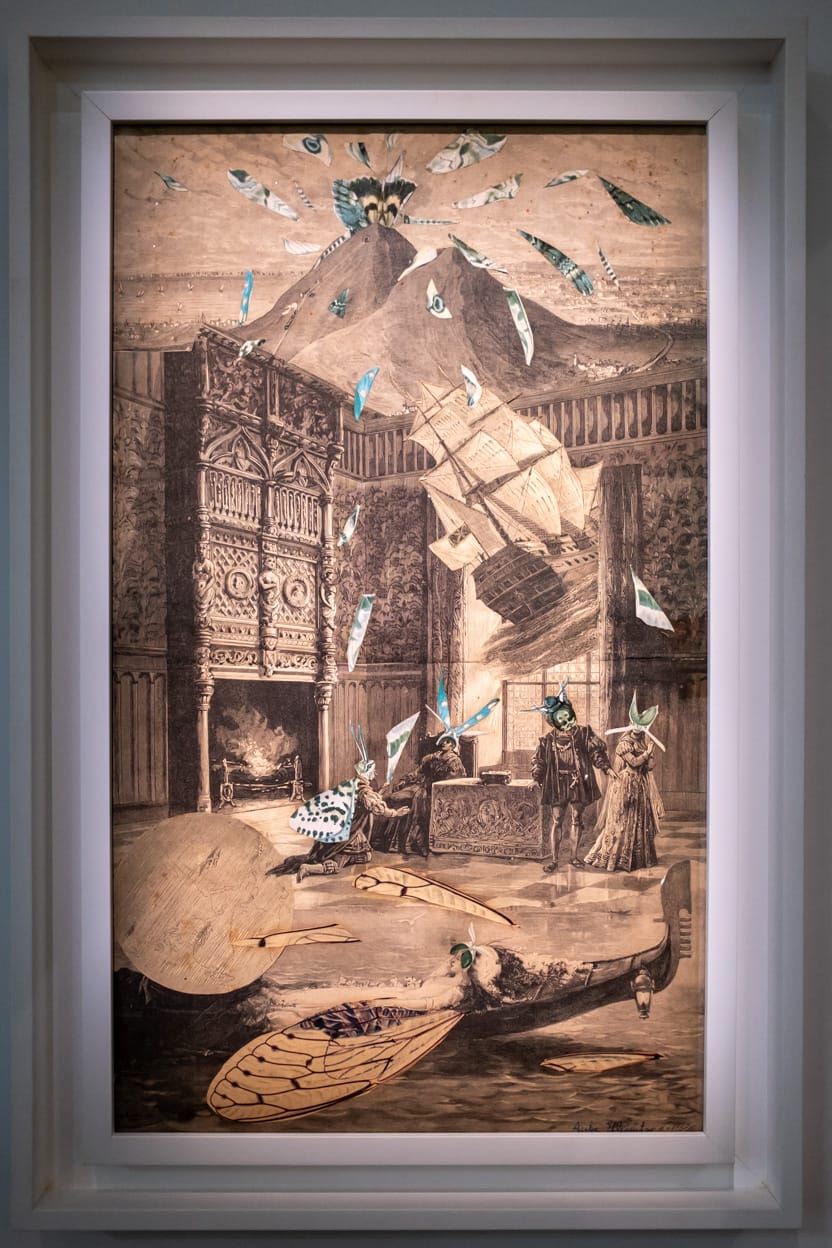
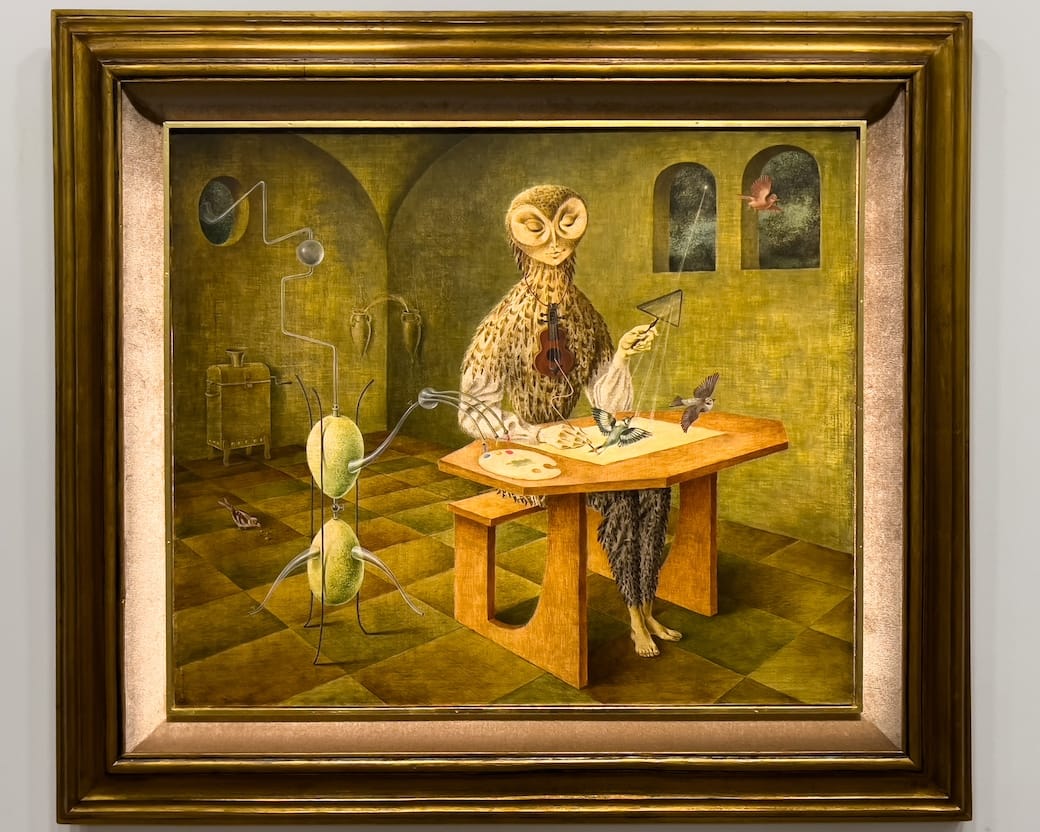
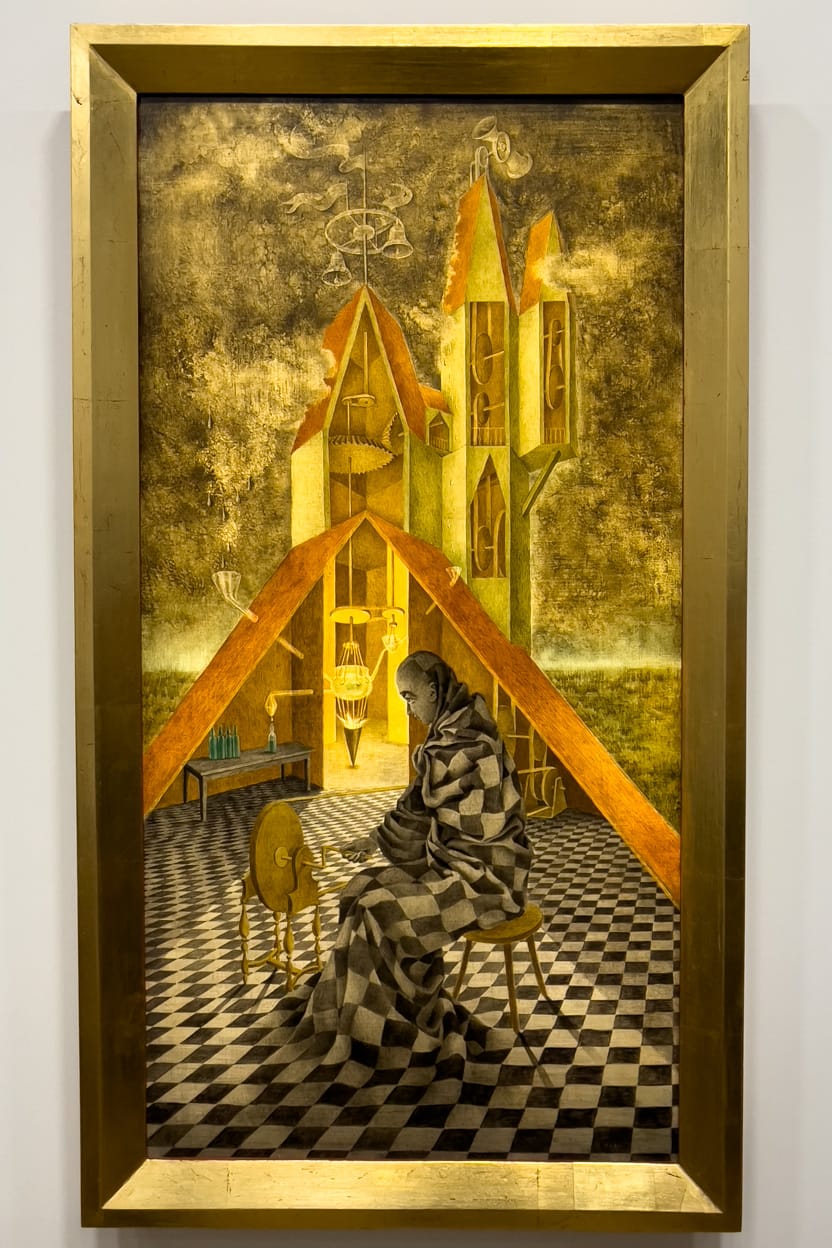
Aube Elléouët-Breton, Elseneur (left), Remedios Varo, Creación de las aves (middle) and Ciencia inútil o el alquimista (right)
The Surrealist artists drew inspiration from the work of Sigmund Freud, ancient mythology, as can be seen in their fascination with the figure of the Minotaur, and writers such as Lewis Carroll, - one section of the exhibition is dedicated to Alice in Wonderland. Another source of inspiration was a text by a long-forgotten author, who died in 1870 at the age of 24, Isidore Ducasse, alias the Count of Lautréamont. The text defied all logical construction, which appealed to the Surrealists. But one phrase in particular caught the eye of André Breton. For in one of his poems Ducasse/Lautréamont speaks of something as “beautiful (..) as the chance meeting on a dissection table of a sewing machine and an umbrella”, which could serve as both a definition of Surrealism and a principle of its collage aesthetic and which various artists would (literally) visualize.
The centenary exhibition is highly enjoyable and informative. I had never realized that the paintings from Giorgio de Chirico’s (1888-1978) metaphysical period pre-date Surrealism by several years and served as an inspiration for René Magritte and Max Ernst. It is, of course, totally obvious if you look at the dates. My favourite sections of the exhibition are the ones dedicated to the Forest and the Cosmos. I didn’t know that forests held such great attraction for the Surrealist artists, but it makes sense once you think of enchanted forests.
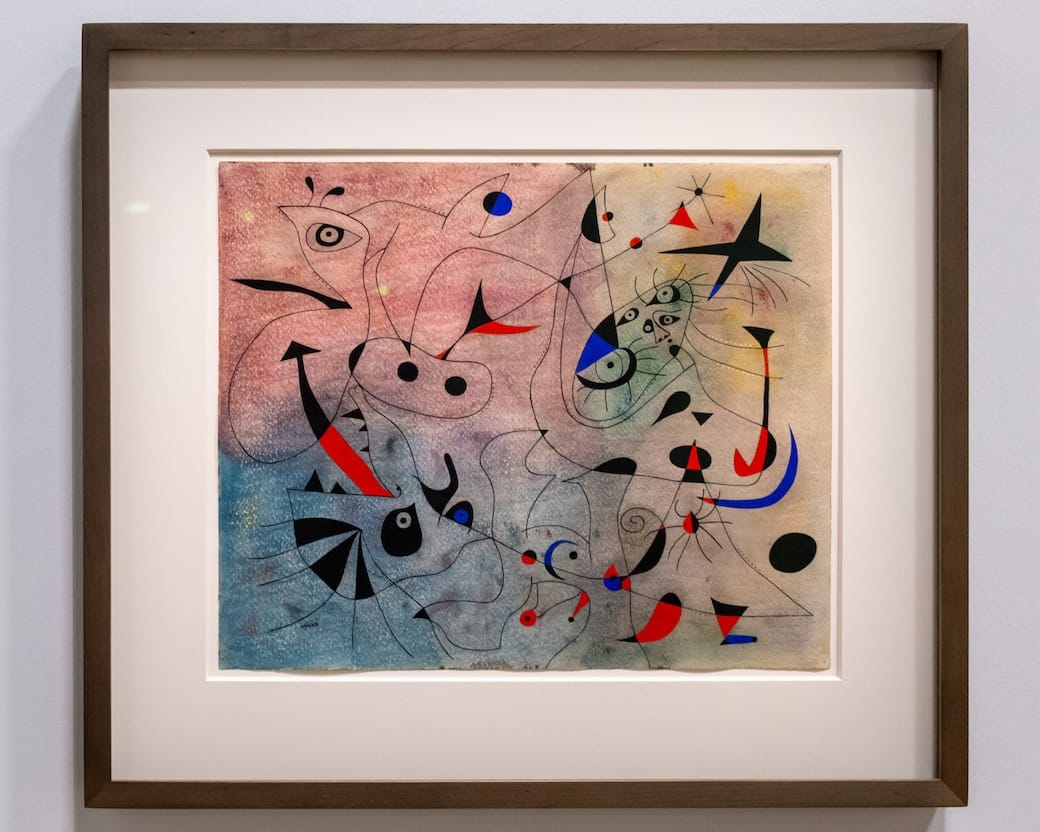
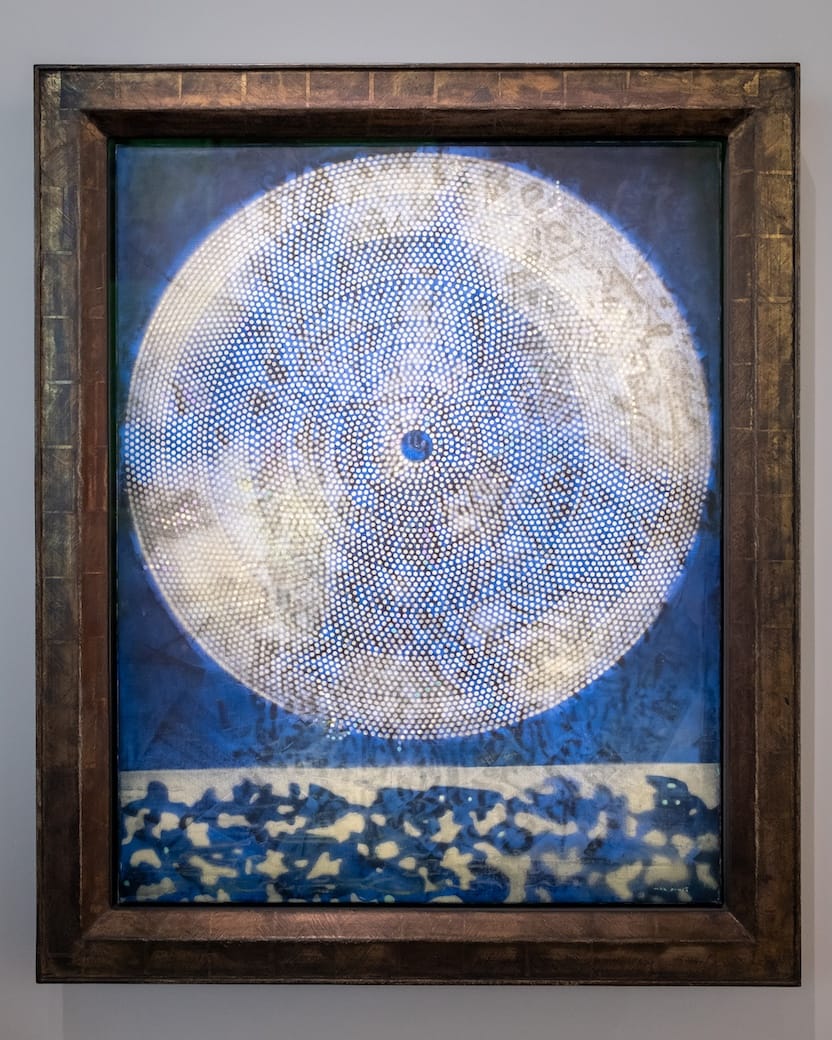
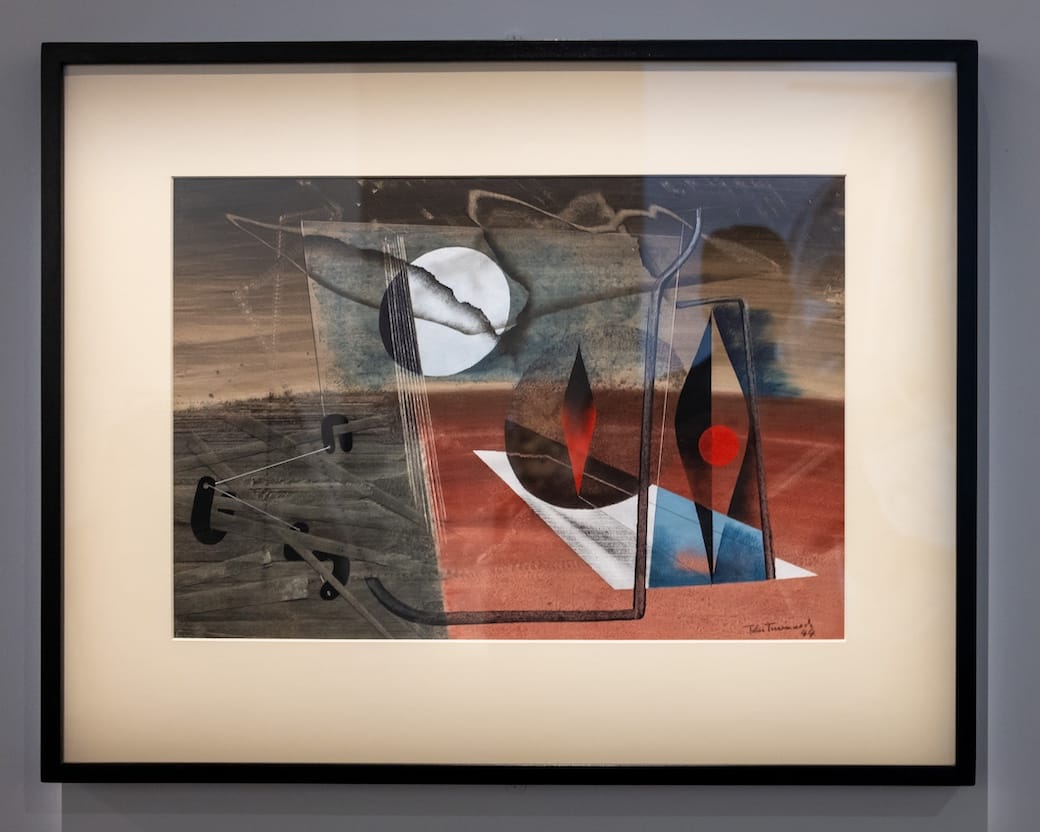
Joan Miro, L'Étoile matinale (left), Max Ernst, Naissance d'une galaxie (middle), John Tunnard, Lunar synthesis (right)
Surrealism is at the Centre Pompidou in Paris until 13 January 2025. The exhibition will travel on to Fundación Mapfre, Madrid from 4 February to 11 May 2025, the Hamburger Kunsthalle, Hamburg from 12 June to 12 October 2025, with final destination the Philadelphia Museum of Art, Philadelphia from November 2025 to February 2026.